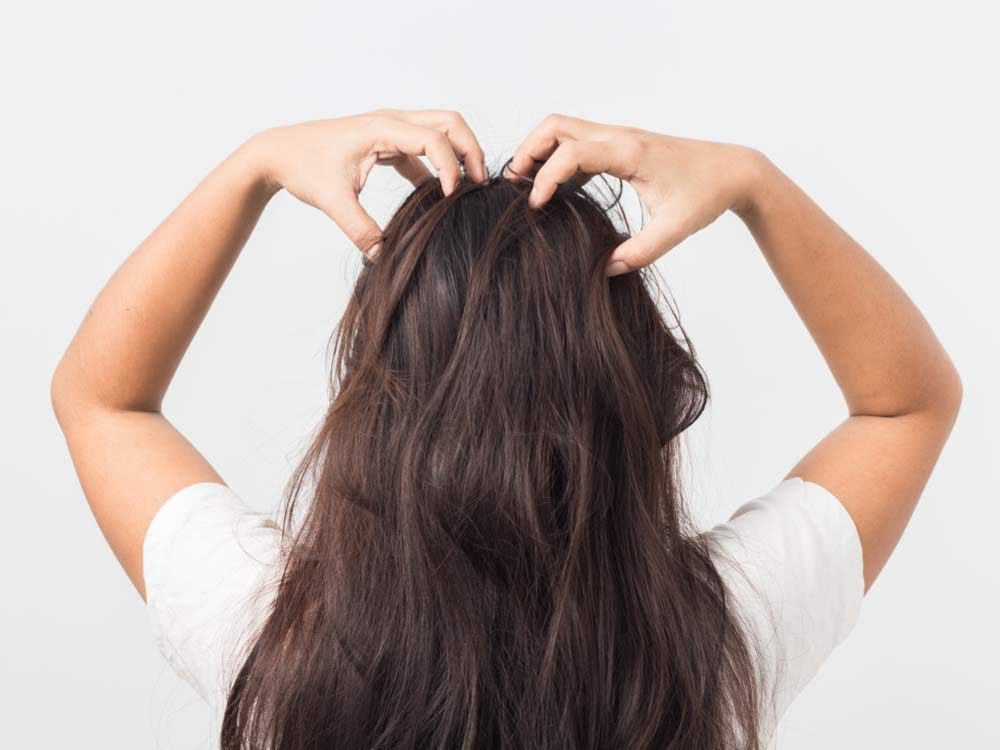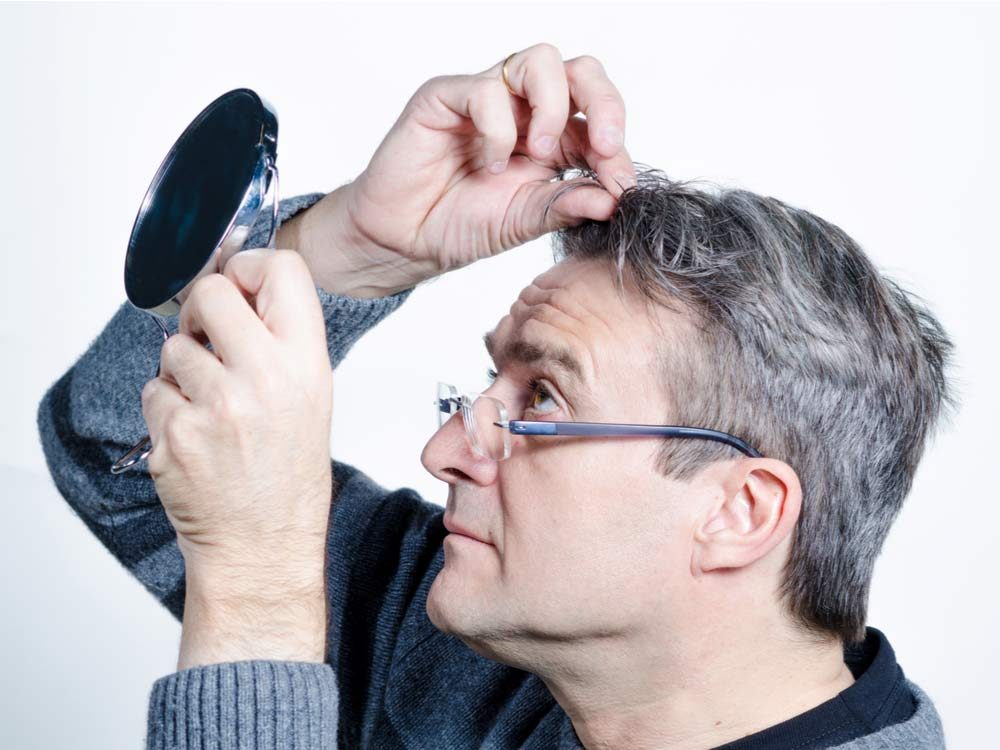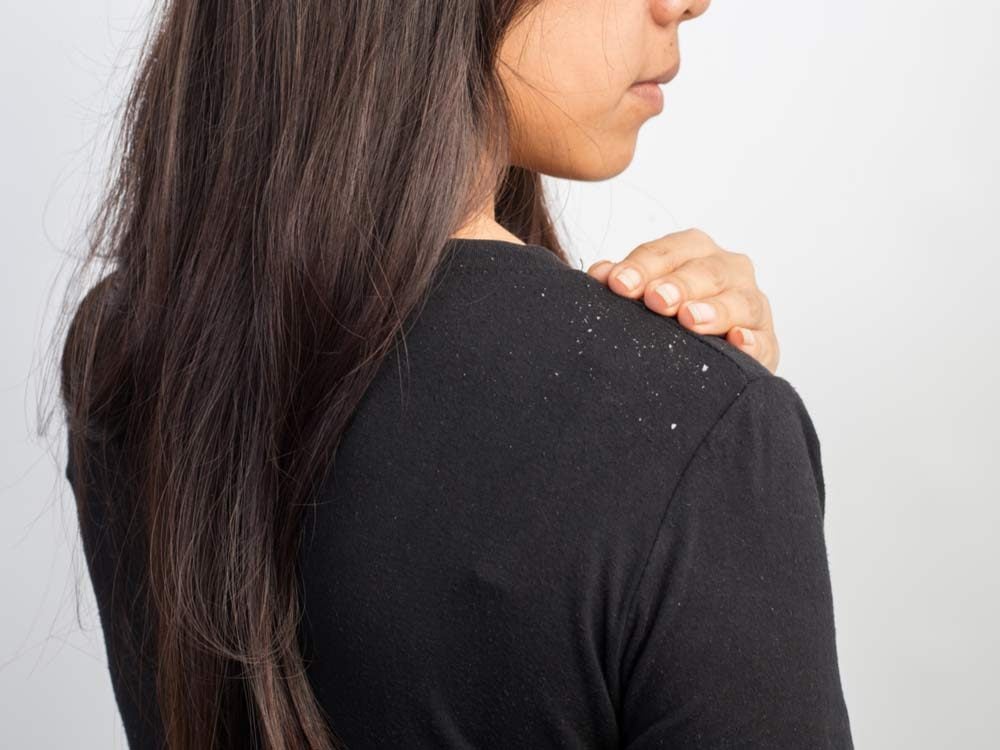
How Many People Have Dandruff?
Marked by an itchy, irritated scalp and the obvious flakes that come along with it, you know dandruff by sight.
“The medical term for dandruff is seborrheic dermatitis, and it’s a type of inflammation of the skin that’s associated with oily or greasy scales,” says Dr. Peter Vignjevic, a dermatologist in Hamilton, Ont., and an assistant clinical professor of medicine at McMaster University Medical School. While it most often affects the head and scalp, it can also occur on the eyebrows, eyelashes, eyelids, on and around the nose, the ears and sometimes behind the ears, says Vignjevic. In men, beards can also be affected.
Estimates vary, but between 10 and 50 per cent of the population develops dandruff at some point in their lifetime. But what is it exactly, what causes it, and what can you do to control it?
Check out these home remedies for dry and damaged hair.

What Causes Dandruff?
Over the last century, medical opinion has shifted regarding the reasons for seborrheic dermatitis, explains Dr. Roderick Hay, a consultant dermatologist and professor of cutaneous infection at King’s College in London, England. Early 20th century medicine pinpointed a fungus on the skin as the culprit, but in the 1950s and ’60s, according to Hay, “It was regarded as a proliferate disorder, a condition in which the epidermis replicates much faster, so something like psoriasis.” In the last 30 years, the fungus theory has resurfaced because doctors realized anti-fungal medications reduced dandruff.
The particular yeast—a kind of fungus—associated with dandruff is called Malassezia. “Our skin is covered with literally millions of bacteria,” says Hay, and for the most part they are harmless. In some people, though, the Malassezia yeast can produce enzymes that irritate the skin by either stripping it of its natural fats or by triggering the immune system, which then develops a proactive response. “The two together are probably part and parcel of what we call dandruff,” says Hay. People who are stressed and tired are often more prone to the condition, and while cold weather can aggravate dry, scaly skin, dandruff is not usually seasonal, says Hay.

How Can I Get Rid of Dandruff?
The first line of defense is choosing an anti-fungal shampoo that contains either ketoconazole or zinc pyrithione, which fight the yeast overgrowth itself. You can also use a coal tar shampoo, says Hay, which he describes as very old-fashioned, but it is a potent anti-fungal. In addition, there are medicated anti-fungal lotions for seborrheic dermatitis that appears on the face and beard, says Vignjevic, which you can get over-the-counter or by prescription. (You won’t believe what weird food helps fight flakes!)
If the anti-fungals aren’t working, you might consider a prescription for a steroid, which addresses the inflammation the yeast triggers, says Hay. There are shampoos, creams and lotions, though long-term use of steroids can cause thinning of the skin, says Vignjevic, and therefore requires caution. A mild steroid can be applied for months, but with anything stronger you may notice stretch marks, bruising or tearing of the skin if you use it long enough, according to Vignjevic.
More appropriate might be non-steroid creams called calcineurin inhibitors—they can manage symptoms without causing thinning of the skin. “In my opinion, they’re safer for long-term use because this tends to be a long-term problem,” says Vignjevic. Which is the trouble with dandruff—there’s no cure. Rather, you simply need to learn how best to control it.
Here are eight showering mistakes you didn’t know you were making!